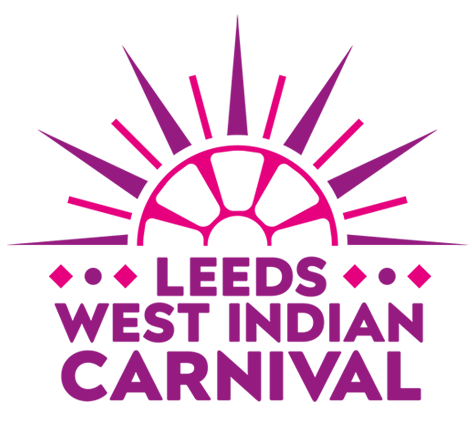Various film footage of Leeds West Indian Carnival in the 1970s.
Includes footage of LWIC 1970, 1974, 1977, 1978 & 1979.
ORIGINS: 1966-7
Leeds West Indian Carnival is the brainchild of Arthur France, MBE, who arrived here from St Kitts-Nevis in 1957. In 1966, two friends of his, Frankie Davis, from Trinidad and Tony Lewis, from Jamaica, students at the University of Leeds, organised a carnival fete at Kitson College (now Leeds City College – Technology). Ian Charles, also from Trinidad but settled in Leeds, was there too. Arthur France decided there should be a carnival parade along the streets of Leeds, as well as the indoor festival of music and costume. “People said I was crazy,” said Arthur, but through his driving force, with Ian’s support, plus help from others including Calvin Beech, Willie Robinson, Samlal Singh and Rose McAlister, Leeds West Indian Carnival was on the road for the first time in 1967. Arthur remains chair of the carnival committee, with Ian as its treasurer, to this day.
A detailed history of Leeds carnival (1967-2000) is available here
http://maxfarrar.org.uk/max-blog/engagement/the-leeds-west-indian-carnival-2/
Leeds or London?
British Caribbean-carnival events first appeared in London in 1959, initiated by Claudia Jones, at St Pancras Town Hall. Edric Connor directed the cabaret which included Cleo Laine, Pearl Prescod and the Trinidad All Stars and Hi-Fi Steel Bands. A Caribbean carnival presence was included in the 1966 Notting Hill street fair along with people from all over Europe in their national costumes. But the first ever West Indian carnival parade, organised by British Caribbeans and composed largely of black people in carnival costumes with their steel bands, took place in Leeds in 1967. In the early 1970s the Notting Hill street fair was being turned into a Caribbean-style carnival, following the trend that Leeds had set.
For a more detailed account of the origins of carnival in Trinidad, and in London and Leeds, see this book chapter by Geraldine Connor and Max Farrar
WHY CARNIVAL?
If you take part in carnival you can see the huge effort and energy that goes into making it happen each year. Why was Arthur willing to devote much of his free time to this? His parents were very religious and would not let him take part back home in Nevis as a child. “But I was always very fascinated by carnival,” he said. “As a child I remember seeing Levi Jeffers and other men who are in Leeds now in a play called David and Goliath which they put on the road in carnival, along with a Masquerade troupe. When I got to Leeds I dreamed of having a carnival here. When I could hear the St Christopher Steel Band in Potternewton Park, just with the pan round their necks, I couldn’t believe it. It was a dream come true.” [You can read more of this here – – insert ‘Dream’ PDF from carnival magazine 1988, reprinted 2007]
There are wider motives for celebrating carnival, which Arthur stated in 1994: ‘Carnival also reminds us of our roots, the struggle our ancestors had to bear, the oppression of our leaders, and great role models, but not in vain, for while we continue to celebrate carnival their achievements will remain with us forever’. The late Dr Geraldine Connor, renowned ethnomusicologist and artistic creator of Carnival Messiah, put it like this in 2007: ‘Carnival is not just a legalized rave – lest we forget, millions lost their lives in pursuit of their liberty. Today, carnival best expresses the strategies that the people of the Caribbean and black British citizens have for speaking about themselves and their relationship with the world, their relationship with history, their relationship with tradition, their relationship with nature and their relationship with God. Carnival is the embodiment of their sense of being and purpose and its celebration is an essential and profoundly self-affirming gesture of a people’.
Community engagement
Today, Caribbean-style carnivals are much-loved festivals involving thousands of people in several English cities. Notting Hill’s carnival, in London, attracts up to two million visitors, while Leeds, the next largest, attracts over 100,000 people. It wasn’t always so. Its origins among the formally free, but still impoverished and angry Africans in the British Caribbean islands were shrouded in violence, amongst the participants, and against the colonial authorities.
Arthur France said when he tried to involve the Leeds black community in carnival in 1966, the vast majority were opposed, claiming that carnival was a degrading, low-class activity. Now that it has consistently proved its worth, it is not only the Leeds Caribbean community that eagerly looks forward to the festivities each August, with hundreds of people parading in their costumes and thousands attending the events. Thousands more people of all cultures from all over the UK, Europe, America and the Caribbean, come to Chapeltown and Harehills to watch the parade from all over Leeds and the north of England. Such is the quality of Leeds Carnival that troupes and Queens join the parade from other northern cities and from Birmingham and Luton, adding to the quality of the art and adding to the excitement.
